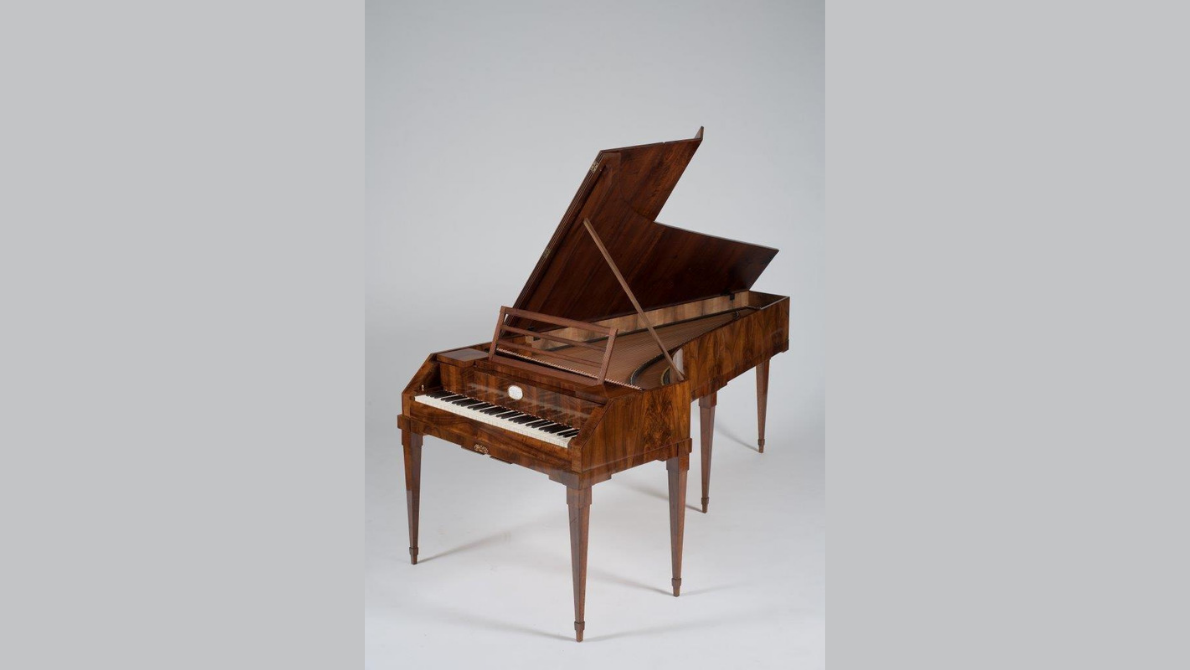February 2024

Anton Walter, organ and instrument maker in Vienna
Anton Walter was born in Neuhausen near Stuttgart in 1752. During the 1780s, he set himself up as an organ and instrument maker in Vienna, the musical capital of Europe. By that time, the piano had largely taken over from the harpsichord, and Vienna was an important centre for piano building. Walter's business soon proved a great success. In a letter dated December 1790, he asked to be granted the title of "Kays. Königl. Hof Orgel und Instrumentenbauer," or "Imperial Royal Chamber Organ Builder and Instrument Maker." Thanks to the support of Prince Franz Xaver Rosenberg, Minister of State and Conference Minister under Leopold II, his request was officially approved by a decree dated December 17th, 1790. In 1791, Walter became a Viennese citizen.
At the turn of the century, his son-in-law Joseph Schöffstoß joined the business, and they signed their instruments "Anton Walter und Sohn." The company continued to thrive: in 1790 it employed 14 instrument builders; in 1804 there were 20. By then, Walter was one of the most distinguished names in the trade. Anton Walter died on April 11th, 1826, two years after his son-in-law. There was no successor.
Esteemed by aristocracy and great musicians
Anton Walter was well known in aristocratic circles and among musicians, as evidenced by his list of customers. The court had four of his fortepianos. Though Mozart was a great admirer of Johann Andreas Stein, a German maker of keyboard instruments in Augsburg, in 1782 he came knocking at Walter's door. Beethoven owned several pianos, including a Walter. Carl Czerny played on that instrument at Beethoven’s home when he was six years old, during his lessons. Later, Czerny recalled Beethoven’s Walter piano in his Souvenirs.
Walter was highly productive and must have made around a thousand instruments, yet only forty have survived. Mozart's instrument is preserved and exhibited in his house in Salzburg. Other surviving Walter pianos are praised for their beautiful sound. The MIM’s copy was built after an instrument from Professor Wolfgang Gamerith’s collection in Oberschützen, Austria. The original was built around 1800 and is probably closer to Beethoven's instrument than Mozart’s, which is twenty years older.
The faithful copy by Robert Brown
The MIM’s copy built by Robert Brown differs from the original only in a few decorative features, such as the case covering and the keys. Brown used walnut veneer for the case, whereas the original is finished with acajou (mahogany), and he covered the white keys in bone rather than ivory. The copy has the same Prellzungenmechanik as the original. This type of action is characteristic of the Viennese school. The range extends over five octaves and a second, from fah to sol, and there are two knee levers: one for the forte register, the other for the Pianozug or celeste. The latter pushes forward a rod that engages pieces of fabric between the hammers and strings.
Robert Brown was born in Nottingham in 1954. When he was 13, he emigrated with his parents to New Zealand, where alongside attending school he also took music lessons at the University of Auckland. In 1977, he studied under organ builder Patrick Collon in Brussels. After that, he worked in two French workshops specializing in historical instruments. In 1985, he opened his own workshop near Salzburg, where he builds and restores instruments. He works on collectors' items from museums and builds new instruments for celebrated musicians, conservatoires, and museums.
Text: Pascale Vandervellen